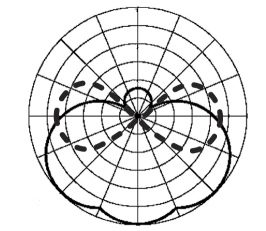Improving the Performance of an Airborne Microwave Video Downlink
The Right Antenna Makes All the Difference
Airborne microwave video downlink systems are an important part of modern law enforcement operations. They provide frontline officers and command staff with valuable realtime tactical intelligence to enhance situational awareness and improve decision making. In the majority of tactical operations, a helicopter with a stabilized FLIR, visual camera, or combination of both, orbits above the scene and relays imagery to the ground via a microwave video link. All too often, the antenna system installed on the airship is not optimized for this scenario and system performance is degraded. Using the proper airborne antenna can dramatically improve the performance of most microwave downlink systems.
A simple understanding of the relationship between the type of airborne antenna and its performance characteristics will help explain why most antennas do not function well in the airborne environment. It is not uncommon to find law enforcement helicopter installations with a small microwave antenna mounted somewhere on the belly of the ship. These antennas are generally inexpensive and may provide adequate performance when the helicopter is miles away from the receiver site, however, when the airborne unit is operating overhead, these omni-directional antennas cannot deliver sufficient signal to the ground station below.
Antennas radiate microwave energy in a particular pattern according to their design. The radiation pattern of an omni-directional antenna can be compared to a donut if we assume that the antenna is mounted vertically through the hole of the pastry. This pattern puts energy out in all directions (360°) around the antenna; however, very little energy is transmitted above or below the antenna. This is why video link performance is poor when the helicopter is overhead and better when it is out on the horizon. Since most tactical operations involve the airship operating directly overhead, the use of an omni-directional antenna appears to be a poor choice. The ideal antenna would radiate energy both on the horizon and directly down to support all operational scenarios. This type of antenna is known as a conical spiral.
The conical spiral is a compact antenna whose pattern is optimized for airborne microwave transmission. The pattern of the conical spiral is hemispherical, meaning that the energy is distributed from the antenna in a pattern that resembles one-half of a basketball rather than the donut pattern of a typical omni-directional antenna. Figure 1 shows the pattern of a conical spiral and that of an omni-directional antenna. The conical spiral is indicated by the solid line and the omni-directional by the dashed line. Notice the difference in energy radiated down toward the ground by the conical spiral. In addition, the conical spiral has more gain than the omni-directional. More antenna gain means greater transmission range without an increase in transmitter power.

Radiation Patterns of Conical Spiral and Omni-directional Antennas
When antenna systems are optimized, system performance can be significantly improved. Our conical spiral antenna, SMA-LS04, is compact, durable, and easily installed in place of an existing omni-directional antenna. This simple improvement in antenna performance will improve the utility of a typical airborne microwave video system.
Such improvement is not limited to the airborne segment. Tactical ground stations can also benefit from optimized antennas. For the same reason that a conventional omni-directional antenna is a poor choice on the helicopter, it is also a poor choice on the ground. In the case of the ground station, the ideal antenna would have a radiation pattern that looked up and out on the horizon to capture as much transmitted energy from the overhead helicopter as possible. Using a conical spiral on the ground station will provide an additional level of reliability to the microwave downlink system.
Microwave antennas with a hemispherical pattern are best suited for airborne and ground station operations in airborne law enforcement. Our handheld tactical video receiver uses such an antenna to optimize its performance when used with a helicopter. The Tactical Video Receiver (TVR) enables units on the ground in mobile command posts, patrol cars, or on foot to receive realtime video from an orbiting helicopter.
Choosing the proper antennas for the mission can significantly enhance the performance of an airborne video downlink. We can help you determine the type of antennas that are best for your application. For more information, contact us.

